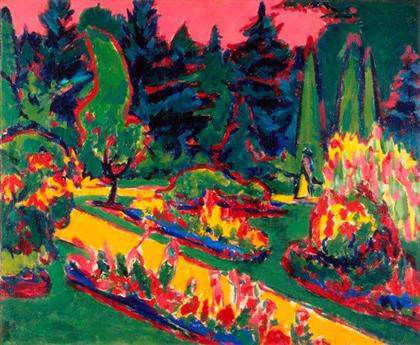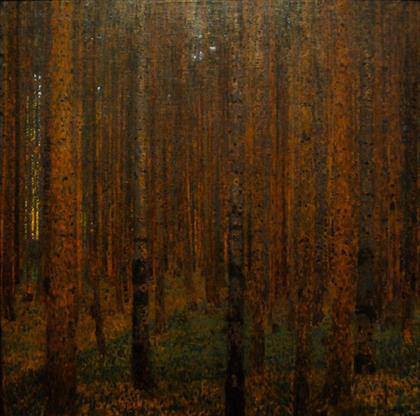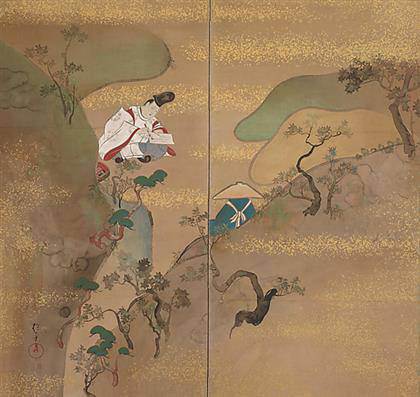
Ernst Ludwig Kirchner
Flower Beds in the Dresden Gardens. c. 1910.
The Baltimore Museum of Art: Gift of Curt Valentin Gallery, Inc.

Gustav Klimt
Pine Forest II. 1901
The Baltimore Museum of Art
German Expressionism at the Baltimore Museum of Art The Baltimore Museum of Art (BMA) presents a compelling overview of one of the most visually arresting art movements of the 20th century in ‘German Expressionism: A Revolutionary Spirit’, on view January 29 – September 14, 2014.]]>
Source: Baltimore Museum of Art (BMA)
The exhibition features more than 35 vivid paintings, prints, watercolors, drawings, and sculpture by Wassily Kandinsky, Ernst Ludwig Kirchner, Franz Marc, and others who contributed to this creative zeitgeist (spirit of the time). The exhibition includes rarely seen works from the BMA and select loans from private collections. It is curated by BMA Associate Curator of European Painting & Sculpture Oliver Shell.
German Expressionism emerged as a result of the country’s extraordinary industrial growth and modernization in the late 19th century. Two groups with similar ambitions formed to liberate themselves from the older generation, revolutionize art, and bring about a universal spiritual rebirth. “Die Brücke” (The Bridge) began in 1905 by Ernst Ludwig Kirchner and several architecture students in Dresden. “Der Blaue Reiter” (The Blue Rider) was organized in 1911 by Wassily Kandinsky and Franz Marc in Munich. Inspired by exhibitions of works by Vincent Van Gogh, Henri Matisse, and others, both groups explored increasingly subjective forms of representation. They also shared a vital sense of celebration and an eagerness for invention, especially in the graphic arts. They were soon joined by Paul Klee, Emil Nolde, Max Pechstein, and other like-minded spirits who believed that art could herald a renewal of society.
The exhibition explores two major themes embraced by this new generation of artists. Some showed a fascination with modern cities and mass entertainment, creating works such as Otto Dix’s print “Woman with Heron Feather” (1923) and Pechstein’s painting “The Circus” (1920), while others demonstrated a concern with nature and folk traditions or were inspired by the kind of authenticity they found in non-European “primitive” art. Many of these artists experimented with woodcut printing techniques that had flourished in the 16th century, creating intensely colored prints like Kandinsky’s “The Archer” (1908-1909) and Kirchner’s “Fir Trees” (1919). Other highlights include Alexei Jawlensky’s “Head of a Woman” (c. 1911) and important precursors to Expressionism such as Gustav Klimt’s painting “Pine Forest II” (1901).
The last section of the exhibition includes intense psychological portraits by Dix, Max Beckmann, and others whose artwork reflects the change in mood caused by the devastation of World War I and Germany’s economic and political collapse. By 1933, the era of Expressionism was largely over.
Related content
Emil Nolde. The Splendor of Colors. Museum Frieder Burda (exhibition, 2013)
Follow us on:


